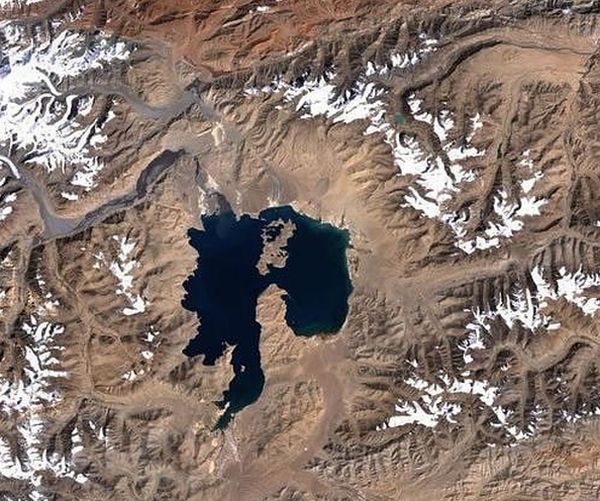
Considering the conditions in deep space, we all know that our beloved home is in between a cosmic battleground, where bullets are replaced with asteroids and comets. Astronomers have always raised fears that an asteroid, even a few hundred meters in diameter, can wipe out life on earth, in a manner similar to the time when dinosaurs were wiped out. Though, the chances for a collision in the near future are remote, the history of our planet shows that it has not remained immune to such collisions and that collisions in the future are imminent. While we donât exactly know the consequences of such a collision, but checking out the scars left on earth by some historic collisions, we believe that the consequences could be disastrous. Here is a list of ten such collisions that left scars so deep on the earth that theyâre still visible.
1. Mexicoâs Chicxulub crater
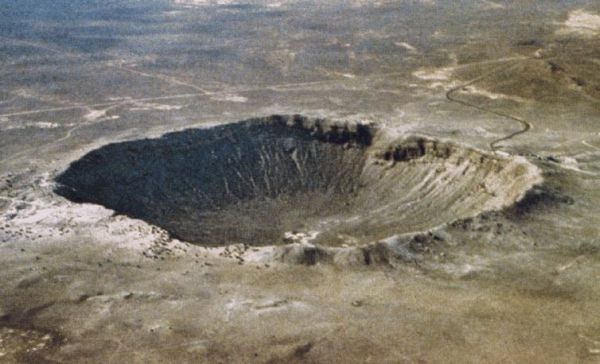
The asteroid of the size of a small city smashed into Earthâs atmosphere some 65 million years ago and caused devastation all around causing mega-tsunamis, earthquakes and volcanic eruptions. The impact of such meteoritic activity is held responsible for the extinction of dinosaurs 65 million years ago. The gases and dust released due to volcanic eruptions are held responsible for creating greenhouse effect by blocking sunlight.
2. Manicouagan Crater, Canada
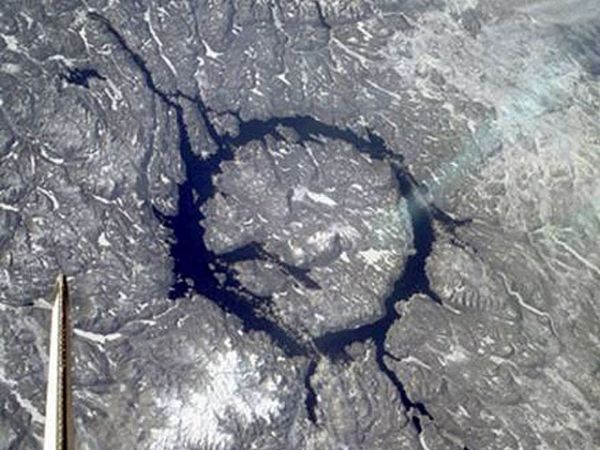
It is one of the largest craters known till date. 40 miles in diameter this crater is believed to be formed some 200 million years ago by the impact of an asteroid. Concentric structure of the crater depicts the shock waves generated by the impact of the asteroid. Its structure is somewhat similar to the rings formed when a pebble is thrown into water. Researchers have proved that the structures created by the asteroids are rich is iridium. This element is rarely found on the in Earthâs crust. The presence of this element spots more evidences in connection with the extinction of the entire species at Cretaceous-Tertiary boundary. But the researchers are still skeptical about it and researches are still being carried out to find out more evidences.
3. Karakul in Tajikistan
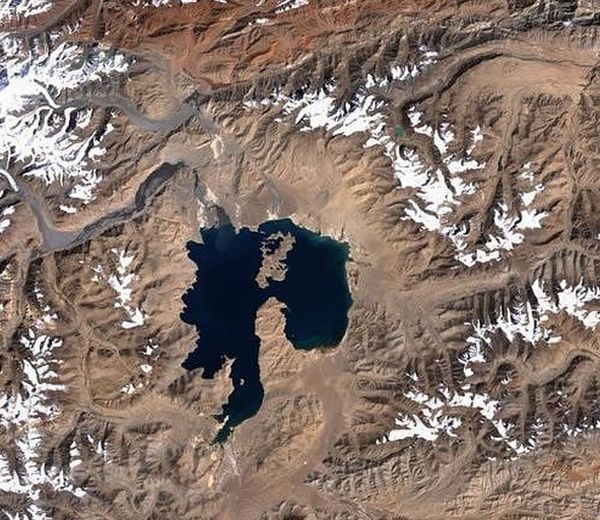
Karakul sometimes called as âQaraqulâ or âBlack lakeâ is a lake 32miles in diameter formed due to asteroid activity in the Pamir Mountains in Tajikistan. This lake is an endorheic lake, which means it has no drainage outlet. British administration in India used to call this lake as âLake Victoria of the Pamirsâ. The meteorite impact that created this lake is believed to have occurred around 25 million years ago. The structure was identified while studying the pictures taken from space.
4. Clearwater Lakes, Canada
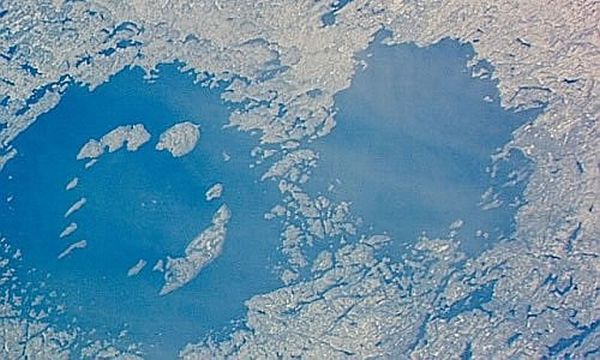
NASA has identified the twin circular lakes near the eastern shore of Hudson Bay in Canada. These lakes are believed to have been formed roughly 290 years ago. The asteroids that smashed the surface of earth during that age are considered to be responsible for their formation. Western lake has got a ring of islands within a diameter of 10 kilometers around the center of the impact zone. These islands have central protruded areas covered with shock melts. The water of these lakes is exceptionally clear and the central peak of eastern Clearwater lake is flooded in water. The impact of glaciers in the surrounding territory has left the terrain scarred. Irregular structure of large number of lakes in this region is because of the scratching and scouring action caused by continental ice sheets that moved in this region.
5. Mistastin Lake, Newfoundland, Canada
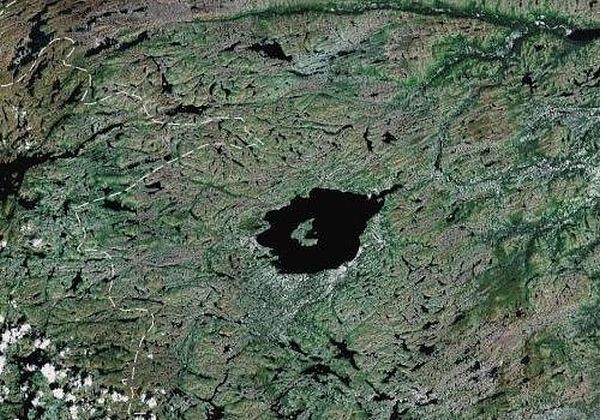
A 17.4miles wide lake was formed in Labrador, Canada by a meteorite crash that occurred around 38million years ago. The hole formed by such immense collision gave outlet to the eastward moving glaciers and their sizes have decreased drastically since then. These glaciers started melting and formed a lake known as Mistastin lake. It the heart of the lake lies an island that is possibly believed to be the uplift of the crater. This island is known as Horseshoe Island and it is formed of Precambrian crystalline rocks. Leftovers of the asteroid collision around the margins of the lake and smashed and distorted structures are the proof of meteoritic activity in this region.
6. Gosses Bluff, Australia
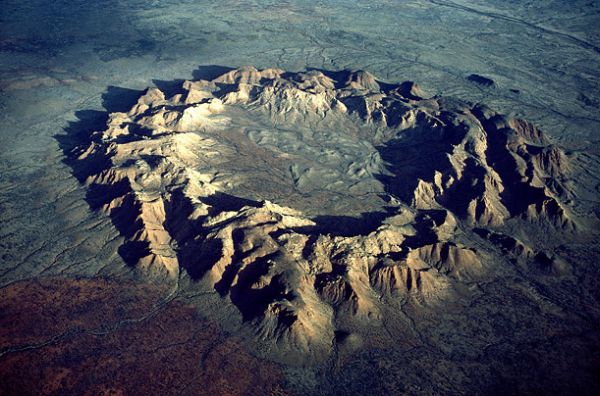
Gosses Bluff Crater lies between south of Tropic of Capricorn and west of Alice Springs in the Macdonnell ranges in Australia. They are circular in structure. The photographs reveals that the original crater is about 12miles in diameter and a prominent circle of sandstone 2 miles in diameter, is uplifted in the middle of the crater highlighting the impact of smashing collision.
7. Aorounga Impact Crater, Chad
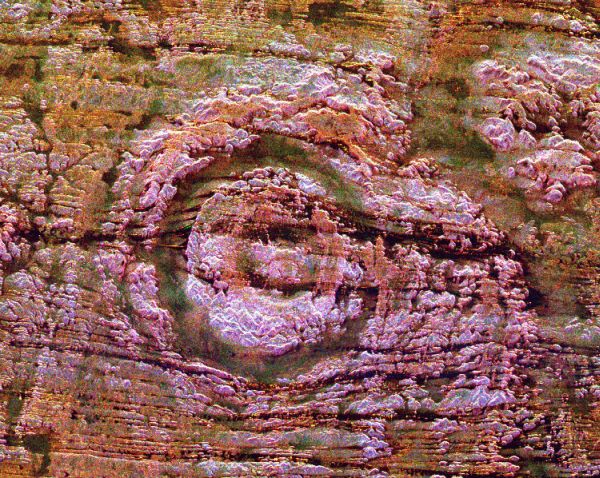
Another impact of meteoritic activity has been found in the Sahara Desert of northern Chad. It has spread across 11 miles distance and is believed to be formed by an asteroid about 2 miles in size. Its whole structure contains multiple craters formed by the collision of various fragments of the colliding object. The images of this crater were obtained on April 11, 1994 by SIR-C/X-SAR Space shuttle.
8. Deep Bay, Saskatchewan, Canada
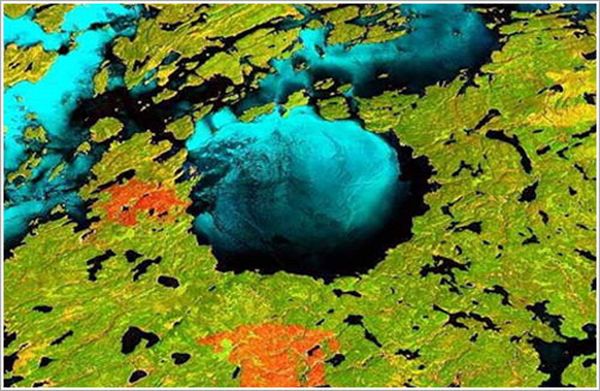
5kms wide and 220 meters deep, this crater is circular bay in the shallow Reindeer Lake. It is surrounded by the high ridges with 100 meters height above the surface of lake. These ridges form the outer surface of the lake. It has got a submerged center and is formed of metamorphic crystalline rocks.
9. The Lake Bosumtwi impact crater, Ghana
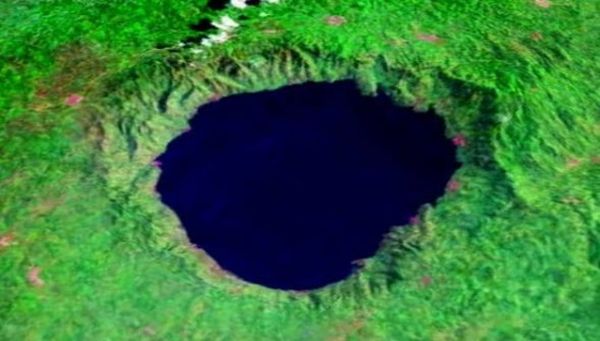
Lake Bosumtwi is located about 30kms south-east of Kumasi, Ghana. It is the only natural lake found in Ghana and lies in the crystalline bedrock of the West African Shield. They are believed to be formed some 1.3 million years ago. Its diameter is around 6 miles and is surrounded by dark rainforest forest.
10. Meteor Crater, Arizona, United States
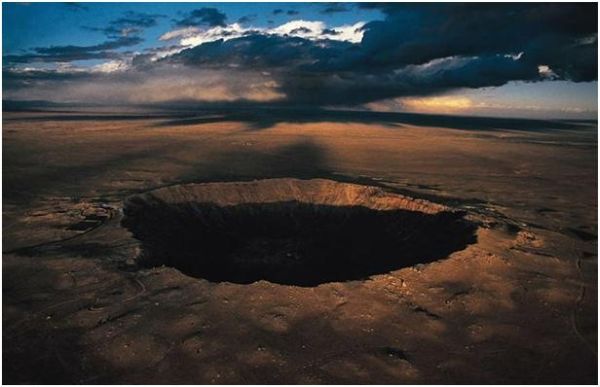
It is believed that a massive nickel-iron asteroid weighing several thousand tons, having speed of around 40,000mph hit Earth some 49,000 years ago.The impact of this asteroid is called as Barringer Crater and is 55km east of Flagstaff, Arizona. The most significant feature of this crater is that it is the best preserved crater till date.


